Cabinet hardware may seem like A small detail, But it can have A big impact on the overall look and functionality Of your kitchen or bathroom cabinets. From the type of hardware to the finish and style, Choose the right cabinet hardware is essential for creating A cohesive and polished design. In this article, We’ll guide you through the process Of selecting the perfect hardware for your cabinets. We’ll start with An explanation of cabinet hardware and its importance, Followed by an overview of the article’s contents, including the types Of hardware available, How to match your hardware to your cabinet style and finish, And tips for making the most Of your hardware selection. So let’s get started and explore the world Of cabinet hardware!
What Is Cabinet Hardware?
Cabinet hardware refers to the various components used to open, close, And secure cabinets and drawers in your kitchen or bathroom. This can include knobs, pulls, hinges, latches, catches, And other accessories that are attached to the cabinet Or drawer fronts. Cabinet hardware not only serves A practical purpose but also adds A decorative touch to your space. It can help tie together the design elements in your room and provide a finishing touch to your cabinets. The right hardware can enhance the functionality of your cabinets and drawers, as well as contribute to the overall aesthetic of your space.
How To Choose Cabinet Hardware Size?
Choosing the right size of cabinet hardware is essential to achieving a cohesive and polished look in your kitchen or bathroom. Here Are some tips to help you choose the right size Of hardware for your cabinets:
- Consider the size Of your cabinet doors And drawers. Larger doors and drawers may require larger hardware, While smaller ones may look best with smaller hardware.
- Think about the overall style Of your cabinets. Sleek, modern cabinets may look best with smaller, more understated hardware, while traditional cabinets may benefit from larger, more ornate hardware.
- Keep in mind the placement of the hardware. If you’re using hardware on the corners of your cabinet doors or drawers, larger hardware may be necessary to ensure that it is visible and easy to grasp.
- Consider the visual weight of the hardware. Even if two pieces Of hardware are the same size, One may appear heavier Or bulkier than the other depending on its design And finish.
- Take your personal preferences into account. Ultimately, The size of your hardware should be A reflection of your personal style and taste.
Types Of Cabinet Hardware
1. Knobs
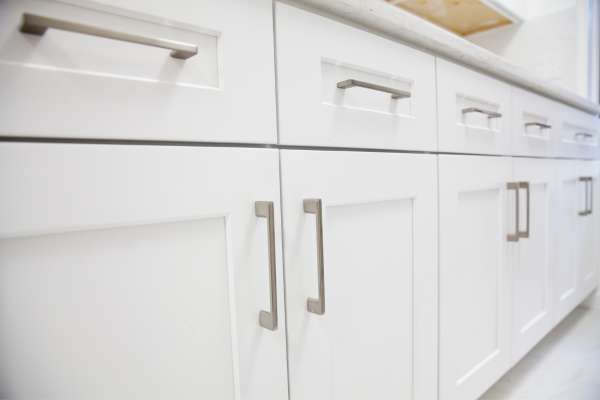
Cabinet knobs are small, decorative hardware pieces that are attached to the front of cabinet doors and drawers. They can come in A variety of shapes, sizes, And materials, including metal, wood, glass, And ceramic. Knobs are often used for A more classic Or traditional look, But can also Be used to add a pop of color or texture to A modern or contemporary design.
2. Pulls

Cabinet pulls are larger than knobs and have a longer, more rectangular shape. They are often used on drawers and cabinets to provide a more modern or contemporary look. Pulls can come in A variety Of sizes, finishes, And materials, including metal, wood, glass, And acrylic. Some pulls are designed with a finger groove or indentation, making them easier to grip and pull open.
3. Handles
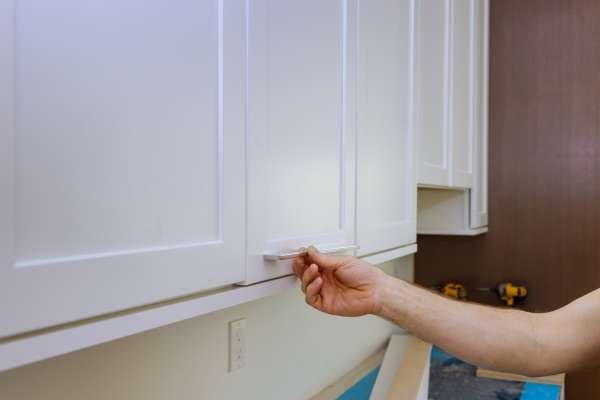
Cabinet handles are similar to pulls but have a more curved or angled shape. They are often used for larger drawers Or cabinets And can Be used for A variety of styles, from traditional to modern. Handles can come in A variety Of materials, including metal, wood, And plastic, and can Be either simple Or decorative in design.
4. Hinges

Cabinet hinges are essential for allowing your cabinet doors to open and close smoothly. They can come in A variety of materials And finishes, including stainless steel, brass, And nickel, And are available in several types, including concealed, semi-concealed, And exposed. Choosing the right hinge is important for ensuring that your cabinets function properly, and can also impact the overall style of your space.
5. Drawer Slides
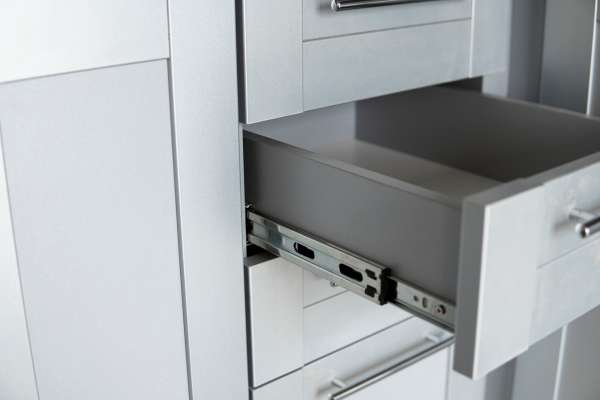
Drawer slides are used to support the weight of drawers and allow them to slide in and out of the cabinet smoothly. There are several types Of drawer slides available, including side-mount, under-mount, And center-mount, Each with its own unique benefits. Side-mount slides are the most common type and are attached to the sides of the cabinet and drawer. Under-mount slides are attached to the underside of the drawer, providing a sleek and hidden appearance. Center-mount slides are attached to the bottom center of the drawer and are often used in older or antique furniture.
6. Cabinet Locks
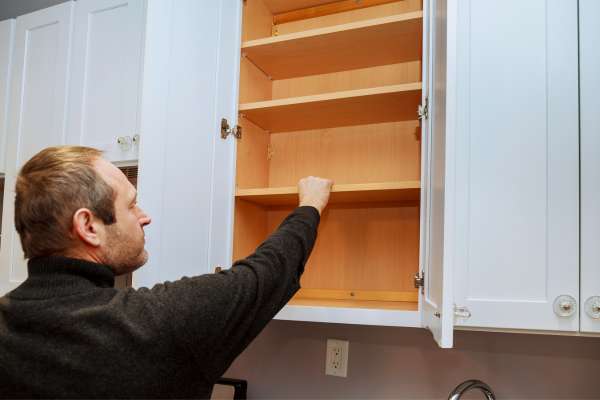
Cabinet locks can provide added security to your cabinets, keeping your valuable items safe and secure. They can come in A variety of styles, including keyed locks, combination locks, And electronic locks. Keyed locks require a key to open and can be either tubular or pin tumbler in design. Combination locks require a code to be entered to unlock the cabinet, while electronic locks can be opened with a keycard or keypad. Choosing the right type of lock depends on your specific security needs and the level of accessibility you require for your cabinets.
Materials Of Cabinet Hardware
1. Metal
Metal is one of the most common materials used for cabinet hardware. It’s durable, Easy to clean, And comes in A variety of finishes, including polished, brushed, And matte. Popular metals for cabinet hardware include stainless steel, brass, nickel, and bronze.
2. Glass
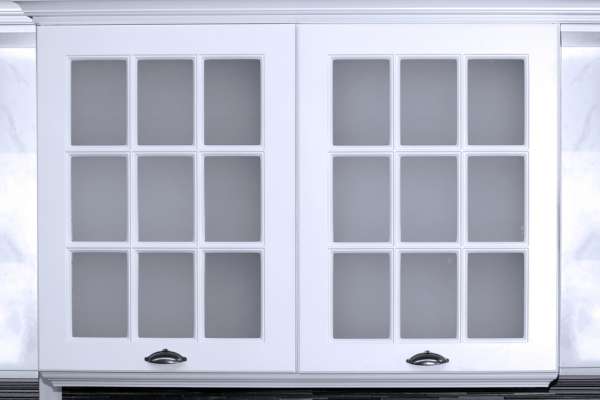
Glass cabinet hardware can add a touch of elegance and sophistication to your cabinets. These pulls are often transparent or translucent and can come in a variety of colors and shapes. They are fragile and can break easily, So they may not Be the best choice for high-traffic areas Or homes with young children.
3. Wood

Wooden cabinet hardware can add a warm, natural touch to your cabinets. They can Be made from A variety Of woods, including oak, maple, cherry, And walnut. Wooden knobs and pulls can be simple or ornate in design and can be stained or painted to match your cabinets.
4. Ceramic
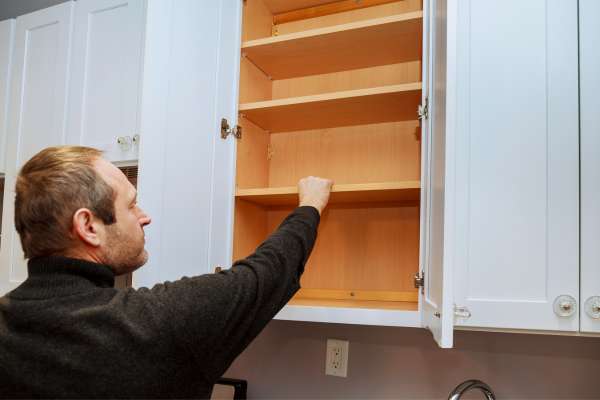
Ceramic cabinet hardware can add a pop of color or texture to your cabinets. They can come in A variety of shapes, sizes, And colors, including solid colors, patterned designs, And textured surfaces. Ceramic knobs and pulls are often glazed to protect them from wear and tear.
5. Plastic
Plastic cabinet hardware is A cost-effective option that can come in A variety Of shapes And colors. They can Be simple Or ornate in design And can Be used in A variety Of spaces, including kitchens, bathrooms, And laundry rooms. Plastic hardware may not Be as durable as metal or wood, So it may need to Be replaced more frequently.
6. Other Materials
Other materials used for cabinet hardware include stone, crystal, and acrylic. Stone knobs and pulls can add a natural, rustic touch to your cabinets, while crystal hardware can add a touch of glamour and sophistication. Acrylic hardware can come in A variety of colors And shapes and can Be used to add A modern or contemporary touch to your cabinets.
Styles Of Cabinet Hardware
1. Traditional
Traditional cabinet hardware features classic, timeless designs that often incorporate ornate details and curves. This style is inspired by historical periods such as Victorian, Georgian, or Colonial. Common finishes for traditional hardware include brass, bronze, and antique silver. Traditional hardware is popular in homes with a more classic or formal style. These types of hardware are often paired with wood cabinetry, especially those with raised panels or ornate moldings.
2. Contemporary
Contemporary cabinet hardware features clean lines and simple shapes that give a modern, streamlined look to your cabinets. This style is inspired by the minimalist aesthetic and is often associated with urban or industrial environments. Common finishes for contemporary hardware include stainless steel, polished chrome, and matte black. Contemporary hardware is popular in homes with a more modern or minimalist style. These types of hardware are often paired with sleek, flat-panel cabinets or those with a glossy finish.
3. Transitional
Transitional cabinet hardware is a blend of traditional and contemporary styles, offering a balance of classic and modern design elements. This style is ideal for those who want A fresh And updated look without sacrificing the warmth And familiarity of traditional styles. Common finishes for transitional hardware include brushed nickel, oil-rubbed bronze, and polished chrome. Transitional hardware is popular in homes with a more eclectic or transitional style. These types of hardware can be paired with a variety of cabinet styles, from shakers to raised panels, making them a versatile choice.
4. Rustic
Rustic cabinet hardware features designs that often incorporate natural materials, such as wood, stone, or iron. This style is inspired by the rugged beauty of nature and is often associated with cabins, lodges, or homes with a more rustic, country feel. Common finishes for rustic hardware include distressed or weathered finishes that give a vintage or antique look to your cabinets. Rustic hardware is popular in homes with a more casual or country style. These types of hardware are often paired with cabinetry made of natural wood or with a distressed finish.
5. Vintage
Vintage cabinet hardware features designs that draw inspiration from past eras, such as Victorian or Art Deco styles. This style is ideal for those who want to add A touch Of Elegance And sophistication to their space. Common finishes for vintage hardware include brass, bronze, And copper. Vintage hardware is popular in homes with A more romantic Or antique style. These types of hardware can be paired with a variety of cabinet styles, from glass-front cabinets to those with intricate carvings, making them a versatile choice.
Choosing Cabinet Hardware
1. Considerations Before Choosing
Before choosing your cabinet hardware, there are several factors to consider. One important consideration is the size of your cabinets. Larger cabinets may require larger hardware, while smaller cabinets may benefit from smaller hardware. Another consideration is the overall style of your space. If you have a more traditional design scheme, you may want to opt for more classic hardware designs, while a modern or contemporary space may call for sleeker, minimalist hardware.
2. Cabinet Style And Color
The style and color of your cabinets should guide your choice of hardware. For example, if you have a white kitchen with Shaker-style cabinets, you may want to opt for classic hardware designs in a brushed nickel finish. If you have a more rustic kitchen with distressed wood cabinets, you may want to opt for hardware with a more antique or vintage look.
3. Hardware Functionality
When selecting hardware, it’s important to consider the functionality of your cabinets. If you have cabinets with heavy doors Or drawers, You may want to opt for hardware with A more ergonomic design, such as pulls or handles. If you have cabinets with glass doors, You may want to opt for hardware that won’t obstruct the view through the glass.
4. Personal Preference
Ultimately, your personal preference should guide your choice of cabinet hardware. Choose a style and finish that you love and that fits in with your overall design scheme. Keep in mind that hardware can Be A great way to add A pop of color or texture to your space, So don’t be afraid to get creative with your choices.
5. Gather Ideas
Start by gathering inspiration for your hardware. Look online, in magazines, And at hardware stores to get A sense Of what styles and finishes are available.
6. Determine Budget
Determine your budget for hardware before making a purchase. Hardware can range in price from A few dollars per piece to several hundred dollars per piece, So it’s important to set A budget that you’re comfortable with.
7. Measure Cabinets
Measure your cabinets before ordering hardware to ensure that you select the right size and style. You don’t want To end up with hardware that’s too small Or too large for your cabinets.
8. Order Samples
Order samples of hardware before making a final decision. This will allow you to see how the hardware looks And feels in your space, And can help you make A more informed decision.
9. Make the Final Decision
Once you’ve gathered ideas, determined your budget, measured your cabinets, and ordered samples, it’s time to make a final decision. Choose the hardware that you love and that fits in with your overall design scheme.
Maintaining Cabinet Hardware
1. Cleaning Methods
Regular cleaning is necessary to keep cabinet hardware looking its best. Different materials require different cleaning methods. For example, Metal hardware can Be cleaned with mild detergent and warm water, While glass And ceramic hardware should be cleaned with A non-abrasive cleaner. It is important to avoid harsh chemicals and abrasive cleaners that can damage the hardware finish.
2. Preventative Maintenance
Preventative maintenance can help to avoid damage to the hardware. For example, If you have knobs Or pulls with loose screws, It is important to tighten them regularly to prevent them from falling off. You should also avoid slamming cabinet doors and drawers, which can damage the hardware.
3. Troubleshooting Common Problems
Some common problems with cabinet hardware include loose screws, misaligned hinges, and worn out drawer slides. These issues can usually fixed by tightening screws, adjusting hinges, or replacing drawer slides. If you encounter any issues with your cabinet hardware, It is best to address them As soon as possible to avoid further damage.
The Final Thoughts
Choosing the right cabinet hardware is An important decision when it comes to creating A functional And aesthetically pleasing space in your kitchen Or bathroom. With various types Of hardware available, including knobs, pulls, handles, hinges, drawer slides, And cabinet locks, It is important to consider factors such as style, material, And functionality when making your selection. Additionally, maintaining your hardware through regular cleaning And preventative maintenance can help to ensure its longevity. By following the steps for choosing hardware, including gathering ideas, determining your budget, measuring your cabinets, and ordering samples, you can make an informed decision that will enhance the overall look and functionality of your cabinets.
